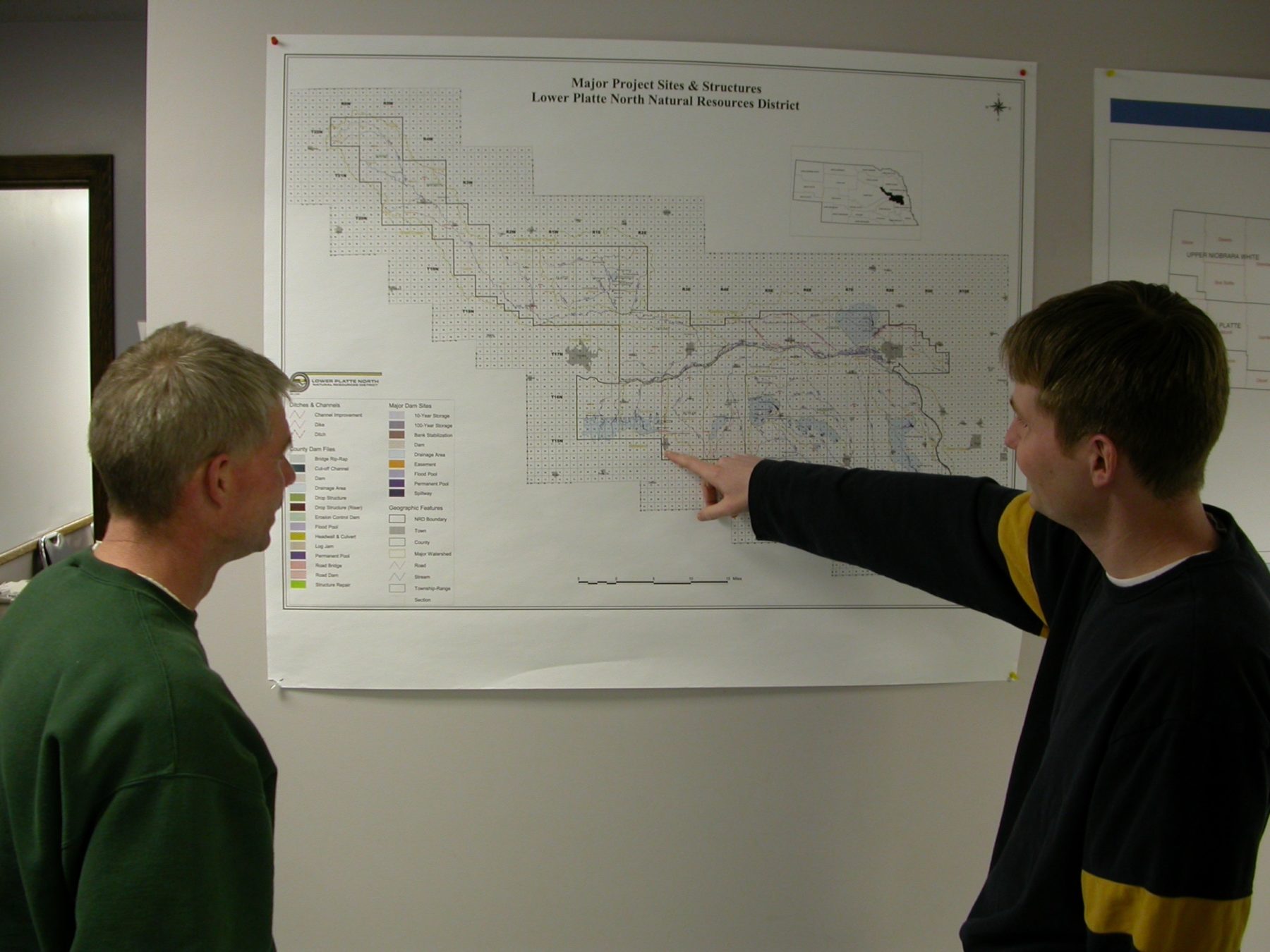NRD Responsibilities
The Lower Platte North NRD is dedicated to the conservation, preservation, and wise use of our natural resources.
Statutory Authority
Under Nebraska state law, NRDs are charged with:
- erosion prevention and control
- prevention of damages from flood water and sediment
- flood prevention and control
- soil conservation
- water supply for any beneficial uses
- development, management, utilization, and conservation of groundwater and surface water
- pollution control
- solid waste disposal and drainage
- drainage improvement and channel rectification
- development and management of fish and wildlife habitat
- development and management of recreational and park facilities
- forestry and range management
Program Areas
To carry out these duties, the Lower Platte North NRD has developed a variety of programs. Get more information on our projects and programs here.
Partners
The Lower Platte North NRD often teams with other agencies to carry out projects, including:
Natural Resources Conservation Service – technical services and administration for many NRD programs
Nebraska Department of Natural Resources – funding for flood control and soil and water conservation projects
Nebraska Department of Environment and Energy – regulatory guidance and funding for pollution control efforts
Nebraska Game and Parks Commission – funding and administration for wildlife habitat and outdoor recreation projects
Nebraska Environmental Trust – grant funding for a wide variety of conservation-related projects
Other partners include cities, counties, extension offices, RC&D councils, other NRDs, and federal agencies.
Membership Dues
Nebraska state law requires that we disclose membership dues paid.
| Organization | Amount |
| Association of State Dam Safety Officials Membership | $58.00 |
| Butler County Chamber | $135.00 |
| Eastern Nebraska Water Resources Association Dues | $30,000.00 |
| Fremont Area Chamber | $150.00 |
| Groundwater Management District Association | $500.00 |
| Loess Hills RC & D | $350.00 |
| Lower Platte River Consortium | $250.00 |
| Lower Platte River Corridor Alliance | $1,000.00 |
| Lower Platte Weed Management | $30,000.00 |
| National Association of Conservation Districts | $1,776.00 |
| National Recreation and Park Association | $470.00 |
| Nebraska Association of Resources Districts | $33,277.39 |
| Nebraska Rural Water Association | $550.00 |
| Nebraska Water Resources Association | $1,950.00 |
| Soil & Water Conservation Society | $230.00 |
| Wahoo Chamber of Commerce | $100.00 |
| Wahoo Kiwanis | $125.00 |
| Wahoo Lions Club | $100.00 |
| Water Strategies, LLC | $26,300.00 |
NRD History
The Lower Platte North NRD began operation on July 1, 1972. The Lower Platte North and 23 (now 22) other NRDs replaced more than 150 special purpose districts, including county soil and water conservation districts and watershed boards.
A New Approach
The NRD system was created by LB 1357 in the 1969 Unicameral session. The far-sighted sponsors of LB1357 (Maurice Kremer of Aurora, C.F. Moulton of Omaha, George Syas of Omaha, and Herb Nore of Genoa) knew that Nebraska’s approach to conservation had become muddled by all of the special purpose districts, which suffered from funding problems and overlapping authority. They wanted to establish multipurpose districts that could deal with a broad range of natural resources issues.
Laying the Groundwork
After the passage of LB1357, the senators spent three years working with the existing conservation districts and other interested parties to hammer out the details of the new system. Realizing that natural resources issues didn’t respect artificial political boundaries such as county lines, they decided to take an innovative approach. NRDs would be based on the major river basins in the state, but still governed by locally-elected boards of directors. This approach combined the flexibility of local government with a broader watershed approach to conservation. NRDs were also given the authority to collect property taxes, which helped alleviate the funding difficulties that plagued the earlier special purpose districts.
Last Minute Challenge
The NRD concept proved somewhat controversial, and had to survive a last-minute court challenge before the 1972 lauch date. However, the Nebraska Supreme Court upheld the constitutionality of the NRD legislation, and the districts were officially formed on July 1.
A Unique System
At first, most NRDs simply continued programs begun by the previous soil and water conservation districts: primarily tree planting, flood control, and land treatment. Gradually, though, NRDs evolved into the multipurpose districts envisioned by their founders, becoming involved in groundwater management, outdoor recreation, and other programs. Today, Nebraska’s unique system of locally-controlled, tax-funded, watershed-based conservation is widely admired throughout the nation.



